A conductor having a cavity is given a positive charge. Then field strength EA,EBandEC at point A( within cavity ), at B ( within conducutor but outside cavity ) and C( near conductor and outside ) respectively will be :
EA=0,EB=0,EC=0
EA≠0,EB=0,EC≠0
EA≠0,EB≠0,EC≠0
None of the above
The correct Answer is:D
To solve the problem, we need to analyze the electric field strength at three different points (A, B, and C) in relation to a charged conductor with a cavity.
1. Understanding the Setup:
- We have a conductor with a cavity inside it.
- The conductor is given a positive charge.
2. Electric Field Inside the Cavity (Point A):
- According to electrostatic principles, the electric field inside a conductor in electrostatic equilibrium is zero.
- Since point A is located within the cavity of the conductor, there are no charges present in the cavity.
- Therefore, the electric field strength at point A, EA, is zero.
EA=0
3. Electric Field Inside the Conductor (Point B):
- Point B is located within the material of the conductor but outside the cavity.
- Again, since the conductor is in electrostatic equilibrium, the electric field inside the conductor is also zero.
- Thus, the electric field strength at point B, EB, is zero.
EB=0
4. Electric Field Outside the Conductor (Point C):
- Point C is located outside the conductor.
- The positive charge placed on the conductor will distribute itself uniformly on the outer surface of the conductor.
- As a result, there will be an electric field present in the region outside the conductor due to this surface charge.
- Therefore, the electric field strength at point C, EC, is non-zero.
EC≠0
5. Final Summary:
- The electric field strengths at the three points are:
- EA=0
- EB=0
- EC≠0
Conclusion:
The electric field strengths at points A, B, and C are:
- EA=0
- EB=0
- EC is non-zero.
- We have a conductor with a cavity inside it.
- The conductor is given a positive charge.
- According to electrostatic principles, the electric field inside a conductor in electrostatic equilibrium is zero.
- Since point A is located within the cavity of the conductor, there are no charges present in the cavity.
- Therefore, the electric field strength at point A, EA, is zero.
- Point B is located within the material of the conductor but outside the cavity.
- Again, since the conductor is in electrostatic equilibrium, the electric field inside the conductor is also zero.
- Thus, the electric field strength at point B, EB, is zero.
- Point C is located outside the conductor.
- The positive charge placed on the conductor will distribute itself uniformly on the outer surface of the conductor.
- As a result, there will be an electric field present in the region outside the conductor due to this surface charge.
- Therefore, the electric field strength at point C, EC, is non-zero.
- The electric field strengths at the three points are:
- EA=0
- EB=0
- EC≠0
The electric field strengths at points A, B, and C are:
- EA=0
- EB=0
- EC is non-zero.
Similar Questions
What is the field in the cavity if a conductor having a cavity is charged? Does the result depend on the shape and size of cavity or conductor ?
View SolutionA conductor with a cavity is charged positively and its surface charge density is σ. If E and V represent the electric field and potential, then inside the cavity
View Solution
Knowledge Check
- Question 1 - Select One
Assertion : In a cavity within a conductor, the electric field is zero.
Reason : Charges in a conductor reside only at its surface.AIf both assertion and reason are true and reason is the correct explanation of assertionBIf both assertion and reason are true but reason is not the correct explanation of assertionCIf assertion is true but reasonb is falseDIf both assertion and reason are false. - Question 2 - Select One or More
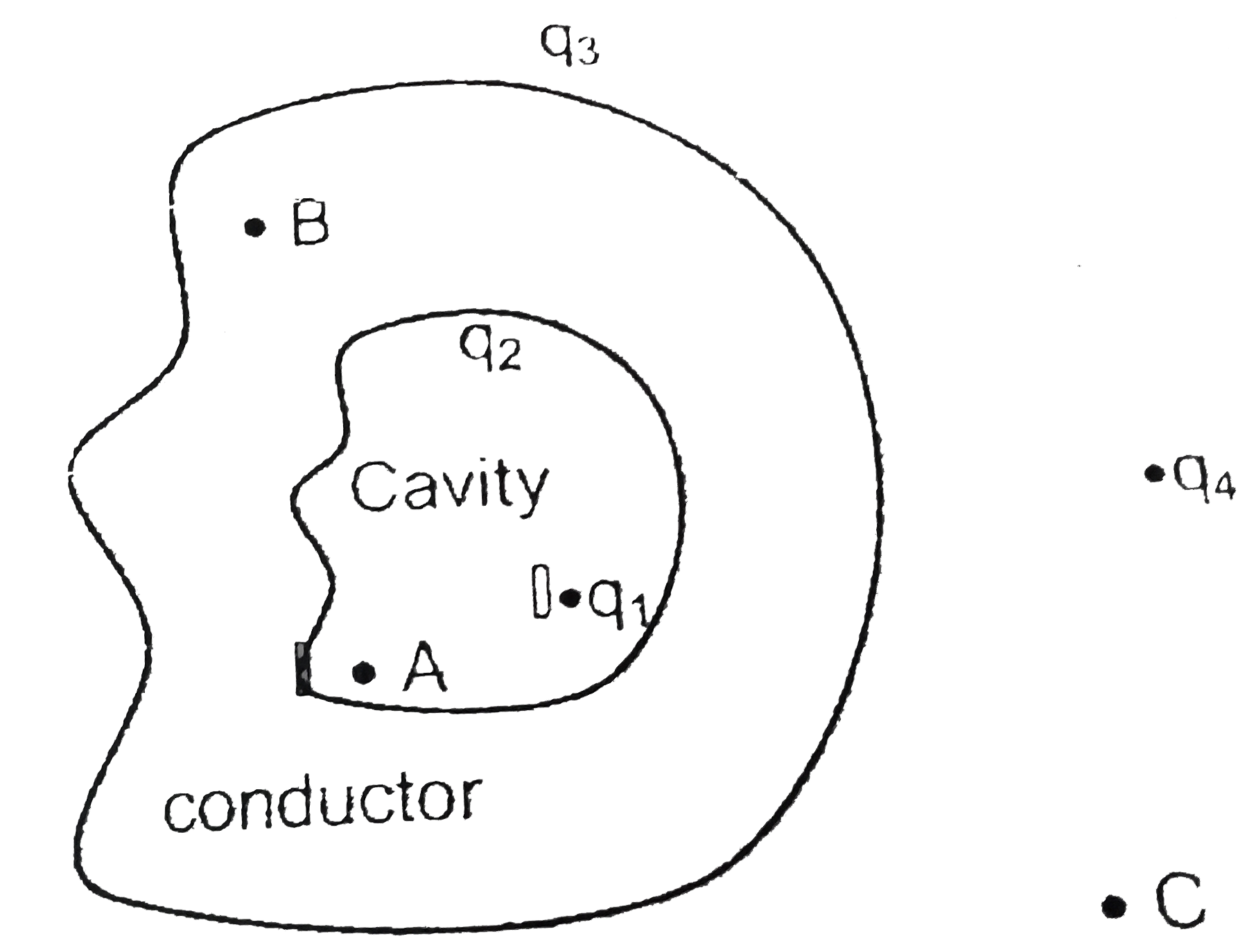
We have a fixed conductor having a cavity inside. There is a point charge q1 kept inside the cavity charge appearing at the inner surface of the cavity is q2. Charge appearing at outer surface of conductor is q3 and there lies another point charge q4 out side the conductor. Whole situation is shown in figure. q4. is held stationary by applying an external force →F0 on it. Three points A, B and C are shown. Answer the following two questions.
Q. If keeping the magnitude and nature of q1 fixed position of q1 is changed inside the cavity. Then choose the correct option(s)AExternal force required to keep q4 stationary remains unchangedBintensity of electric field at point C remains unchangedCintensity of electric field at point B remains unchangedDintensity of electric filed point B only due to q2 remains unchanged. - Question 3 - Select One or More
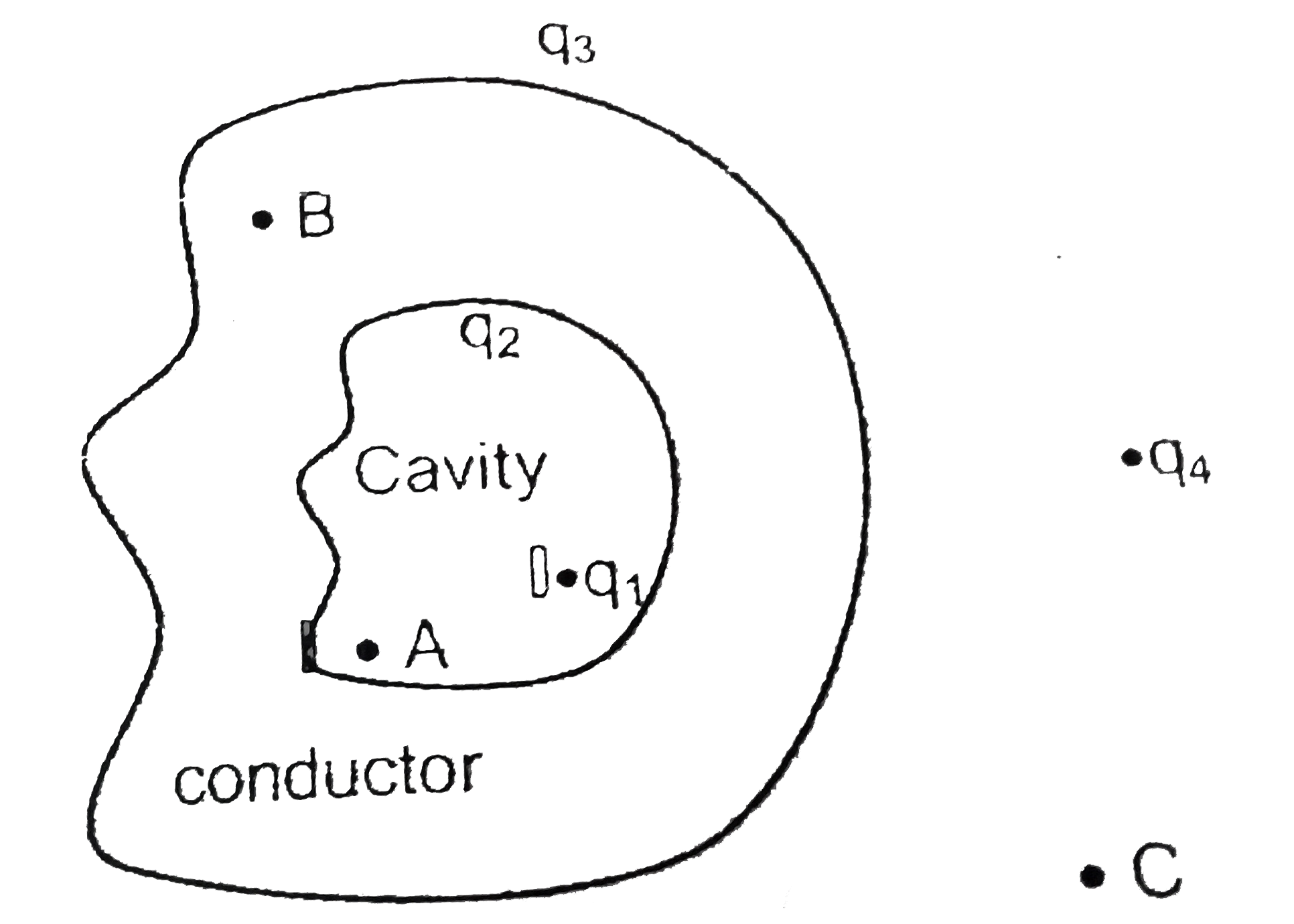
We have a fixed conductor having a cavity inside. There is a point charge q1 kept inside the cavity charge appearing at the inner surface of the cavity is q2. Charge appearing at outer surface of conductor is q3 and there lies another point charge q4 out side the conductor. Whole situation is shown in figure. q4. is held stationary by applying an external force →F0 on it. Three points A, B and C are shown. Answer the following two questions.
Q. If keeping the nature and position of q1 fixed, magnitude of q1 is changed, then choose the INCORRECT options(s)AExternal force required to keep q4 stationary remains unchangedBintensity of electric field at point C remains unchangedCintensity of electric field at point B remains unchangedDintensity of electric filed point B only due to q2 remains unchanged.
Asseration: A point charge q is placed at centre of spherical cavity inside a spherical conductor as shown. Another point charge Q is placed outside the conductor as shown. Now as the point charge Q is pushed away from conductor, the potential difference (VA−VB) between two points A and B within the cavity of sphere remains constant.
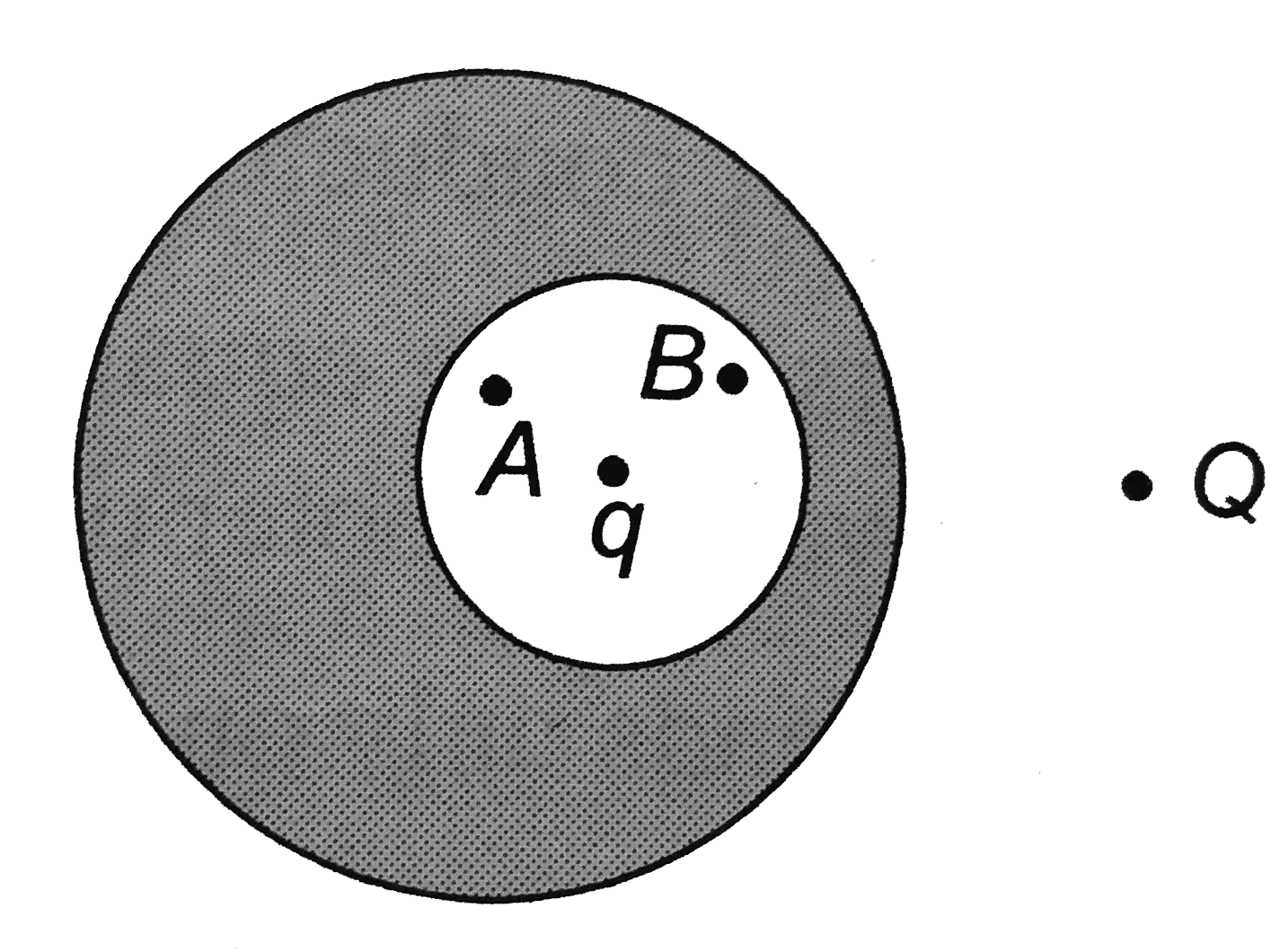
Reason: The electric field due to charges on outer surface of conductor and outside the conductor is zero at all points inside teh conductor.View SolutionConsider a conductor with a spherical cavity in it. A point charge q0 is placed at the centre of cavity and a point charge Q is placed outside conductor.
Statement-1: Total charge induced on cavity wall is equal and opposite to the charge inside
Statement-2: If cavity is surrounded by a Gaussian surface, where all parts of Gaussian surface are located inside the conductor, ∮→Ed→A=0 hence q∈duceed=−q0View SolutionAssertion (A): In a cavity in a conductor, the electric field is zero.
Reason (R ): Charges in a conductor reside only at its surface.View Solutionthe figure shows a charge q placed inside a cavity in an uncharged conductor, Now if na external electric field is switched on
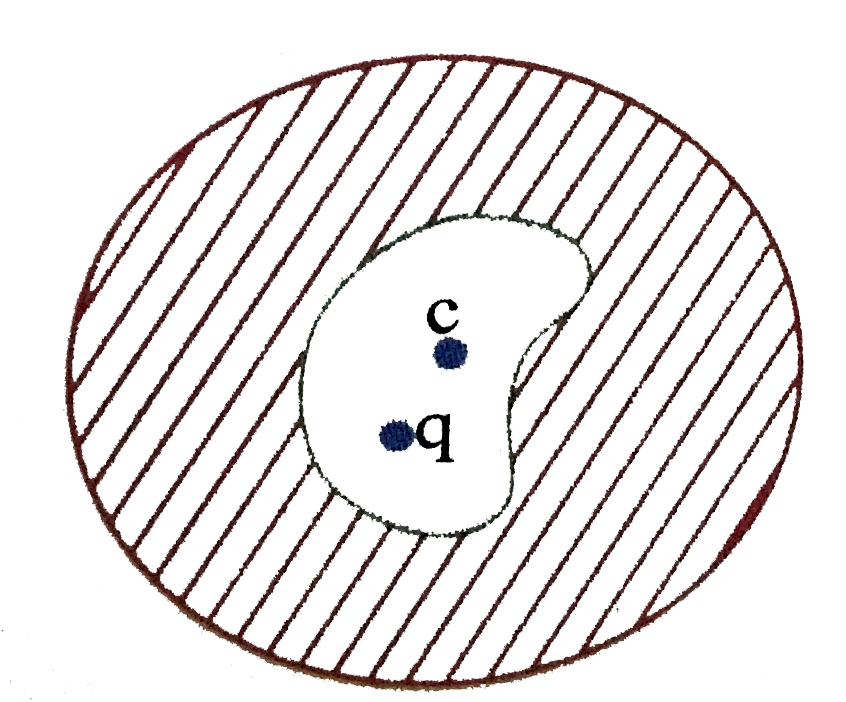 View Solution
View SolutionAn ellipsoidal cavity is carved within a perfect conductor. A positive charge q is placed at the centre of the cavity. The points A and B are on the cavity surface as shown in the figure. Then
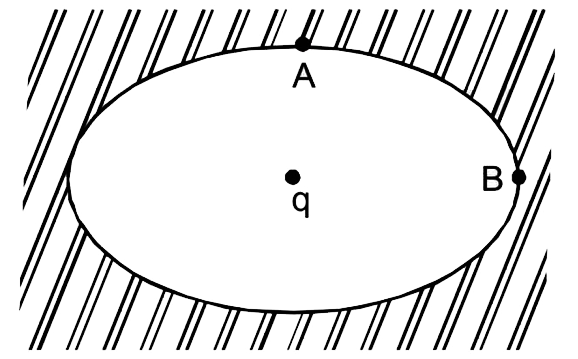 View Solution
View Solution

